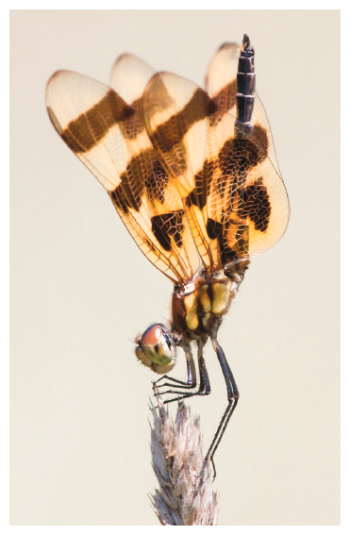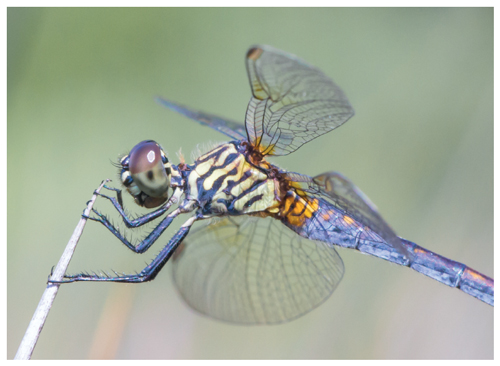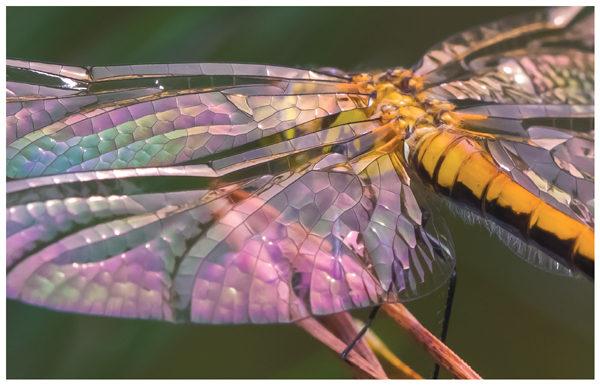Enter the Dragons
By Fenella Saunders
A brief review of Dragonflies: Magnificent Creatures of Water, Air, and Land, by Pieter van Dokkum
A brief review of Dragonflies: Magnificent Creatures of Water, Air, and Land, by Pieter van Dokkum

DOI: 10.1511/2015.116.364
Pieter van Dokkum, an astronomy professor and insect photographer, demonstrates that, as familiar as dragonflies may seem, there’s still much more to take in. His new photography collection, Dragonflies: Magnificent Creatures of Water, Air, and Land (Yale University Press, 2015), showcases these insects in stunning detail.

Images courtesy of Pieter van Dokkum/Yale University Press.
Images such as the one below (bottom), which zooms in on an immature Black Meadowhawk’s wing, display intricate vein networks and reflected colors resembling stained-glass windows. But the book isn’t all show, and even though each photo depicts something remarkable, the subject matter isn’t always pretty. We tour through each life stage from birth to death. Eggs deposited on a plant release plain but voracious nymphs that develop underwater, then molt, transforming into very different adult forms. Adult dragonflies engage in unwieldy midflight mating and eventually die, usually from cold, starvation, accidents, or predation.

Images courtesy of Pieter van Dokkum/Yale University Press.
The contrast between phases is sharp as nymphs enter a desperately vulnerable metamorphosis stage before becoming seemingly invincible predators on the wing. Equally sharp is the dragonfly’s lapse into late adulthood, its ragged wings unable to heal. Some chapters focus more on daily life. During the midday, the insects rest with abdomens pointing straight up to absorb less heat, as this Halloween Pennant (top) shows. Van Dokkum packs the pages with interesting trivia as well—we learn, for instance, that the Seaside Dragonlet (middle) is the only American dragonfly species that breeds in salt water instead of fresh. With such engaging morsels at each turn of the page, Dragonflies is feast for the mind as well as the eyes. —Fenella Saunders

Image courtesy of Pieter van Dokkum/Yale University Press.
Click "American Scientist" to access home page
American Scientist Comments and Discussion
To discuss our articles or comment on them, please share them and tag American Scientist on social media platforms. Here are links to our profiles on Twitter, Facebook, and LinkedIn.
If we re-share your post, we will moderate comments/discussion following our comments policy.